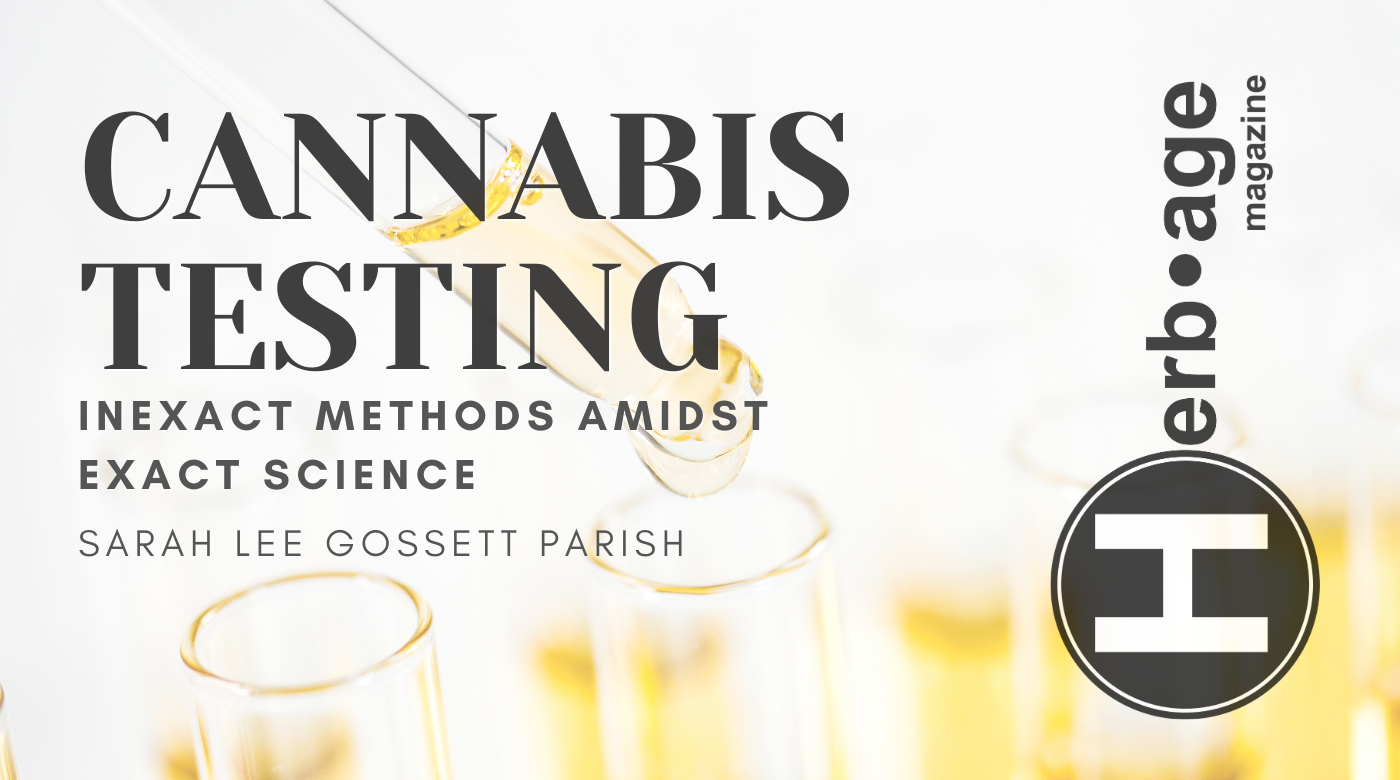Inexact Methods Amidst Exact Science
by Sarah Lee Gossett Parrish – Cannabis Business Lawyer
Cannabis Testing Series Part I
Recently OMMA amended its Rules concerning testing requirements for medical marijuana and even generated a one-page diagram to illustrate the guidelines for ease of compliance. However, these amended rules fail to address the overall issue that plagues cannabis testing across the country—inexact methods amidst exact science. Clearly, the lack of standardized protocols to assess cannabis products for potency and safety poses a huge problem for testing laboratories, patients, and, in those states where adult use is legal, recreational users.
Disharmony in state regulations and the processes used by state-licensed laboratories that test cannabis is extremely disconcerting.
When it comes to determining maximum residual limits (MRLs) of contaminants and adulterants, and specifying the levels of tetrahydrocannabinol (THC), cannabidiol (CBD), terpenes, and the other currently-known constituent components in cannabis (which exceed 80 in number), it is possible that two certified labs could utilize two different testing methods on identical samples to reach two similar, but not identical conclusions.
In fact, a 2018 report by Marijuana Business Daily disclosed that there are numerous accounts of labs producing starkly different potency measurements for identical products, with results varying by as much as 40%. This information is troubling and confirms that the issue must be addressed by the industry as a whole and by our own OMMA.

Ideally, such lab certification requirements and the testing processes and protocols would be developed for the cannabis industry as a whole, at the national level. However, given marijuana’s continued status as an illegal, controlled substance under federal law, a national, standardized set of testing regulations is unlikely to be developed in the near future. But that does not preclude the development of same here in Oklahoma. This standardization would reduce product recalls and make it more difficult for rogue labs to engage in pay-for-results schemes like the recent debacle involving an OMMA-licensed laboratory that was stripped of its license upon discovery of its dishonest testing methods.
While many labs consider their processing and protocols to be proprietary, confidential information, arguments to the contrary are substantial. Standardization of testing methods would eliminate the variability in test results for marijuana potency and in testing for contaminants. Lab protocols often differ in the specific solvents or reagents used during extraction and analysis, and the instruments used by labs can have different manufacturers and calibration standards, both of which will contribute to variations in testing results.
When labs arrive at different results for tests run on identical samples, chances are high that each laboratory is analyzing its sample using a different method.
Without properly validated methods and laboratory certification programs, this lack of uniformity in test results will continue, to the detriment of patients and medical marijuana businesses here in Oklahoma.
Additionally, the wide variety of cannabis products can, in and of itself, complicate testing and contribute to the lack of uniformity in test results, particularly when those conducting the testing do not have formidable scientific backgrounds and/or degrees. Some cannabis products are easier to analyze than others, and each product must be subjected to a customized cannabinoid extraction method before ingredients can be successfully tested. Many employees in Oklahoma testing laboratories are not steeped in scientific degrees or backgrounds. Thus, differences in test results are all too common.

While safety testing is, at least in principle, more standardized than potency testing because labs can rely on methods federal agencies have approved as to other botanical products, there remains a serious concern about the lack of uniform directives as to safe levels of contaminants and application of those levels to smokables versus edibles, the former being a mode of consumption that poses different risks than edibles.
More studies are needed concerning thermal combustion and degradation of pesticides prior to inhalations, to ensure safe threshold levels are known and enforced.
OMMA should consider this variant in its requirements for the testing of smokables versus edibles, and develop standards applicable to each type of medical marijuana product to ensure proper testing and regulation of same.
While lab certification procedures and uniform testing standards should be a top priority for every state, every patient, and every cannabis business, this does not seem to be the case in Oklahoma or in any other state, currently. Efforts must be focused on these important issues to ensure that cannabis products available to patients here in Oklahoma are safe, and that the laboratories licensed by OMMA who are testing those products place integrity above profits, are operated by knowledgeable persons with backgrounds in the sciences relevant to cannabis testing, and are equipped with clear and concise regulations that specify uniform testing methods and outline acceptable potency and safety testing results.
What’s the take-away?
Stay tuned.



